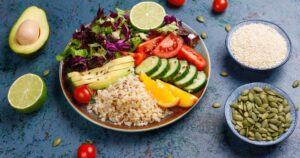Knife Skills: Cutting Techniques for Beginners

Mastering the art of knife skills is an essential foundation for anyone who aspires to become a proficient cook. While it may seem daunting at first, with practice and patience, you can learn to slice, dice, and chop like a pro.
The Right Knife
Whether you want to learn how to cut an onion or how to prepare seafood to cook, the right knife is crucial. While there are various types of knives, a chef’s knife is the most versatile and commonly used in the kitchen. It typically has an 8-10-inch blade that tapers to a point, allowing for a variety of cutting motions. Make sure your knife is sharp and well-maintained, as a dull knife can be more dangerous and less effective.
The Claw Grip
One of the most crucial aspects of safe knife skills is hand positioning. To protect your fingers, use the claw grip. Curl your fingertips under, keeping your knuckles in contact with the side of the food you’re cutting. This position provides stability and prevents your fingertips from getting in the way of the blade.
The Dice
Dicing is a technique used to create small, uniform cubes of food. To dice, begin by slicing the ingredient into strips of your desired width. Next, gather the strips and cut them perpendicular to create cubes. Consistency in the size of the cubes is essential for even cooking.
The Julienne
Julienne is a technique used for cutting food into thin, matchstick-like strips. To julienne, first, create a rectangular or square shape from your ingredient. Then, slice it into thin, uniform strips. This technique is often used for vegetables like carrots and zucchini, and it adds a pleasing texture to dishes.
The Brunoise
The brunoise is a smaller and finer version of the dice. It’s used to create tiny cubes, often for garnishes or to incorporate ingredients seamlessly into dishes. Begin by julienning the ingredient, creating matchstick-like strips. Then, cut these strips into tiny, uniform cubes. Precision is key when executing the brunoise.
The Chiffonade
The chiffonade technique is commonly used for leafy greens and herbs like basil and spinach. Stack the leaves, roll them into a tight cylinder, and then slice across the roll to create fine, ribbon-like strips. Chiffonade adds a beautiful touch to salads and garnishes.
The Mince
Mincing involves chopping an ingredient into very fine pieces. To mince, use the rock chop technique but with smaller, more rapid motions. This technique is frequently used for garlic, ginger, and herbs when you want to incorporate their flavors evenly into a dish.
The Fillet
Filletting is a technique used for removing bones from fish or creating boneless fillets. It requires a flexible and thin-bladed knife. Start by making a precise cut along the spine, guiding the knife through the flesh to remove the fillet. It’s a delicate technique that takes practice.
The Butterflying
Butterflying is a technique used to create a uniform thickness in ingredients like meat or shrimp. Make a horizontal cut through the center of the ingredient, but don’t cut all the way through. Open the ingredient like a book to create a butterfly or “butterflied” shape. This technique allows for more even cooking.
The Scoring
Scoring is a technique used to make shallow, parallel cuts on the surface of ingredients, often meat or fish. Scoring helps tenderize the food, allows marinades or seasonings to penetrate, and prevents the ingredient from curling during cooking.
The Crosshatch
Crosshatching is a technique used after julienning to create a crisscross pattern of cuts. It’s often used for ingredients that benefit from a larger surface area, such as vegetables that will be sautéed or stir-fried. The crosshatch pattern allows for quicker and more even cooking.
Mastering knife skills and cutting techniques is essential for anyone looking to enhance their culinary abilities. By practicing these fundamental techniques, you can increase your efficiency in the kitchen, improve the presentation of your dishes, and elevate your cooking to a whole new level.








